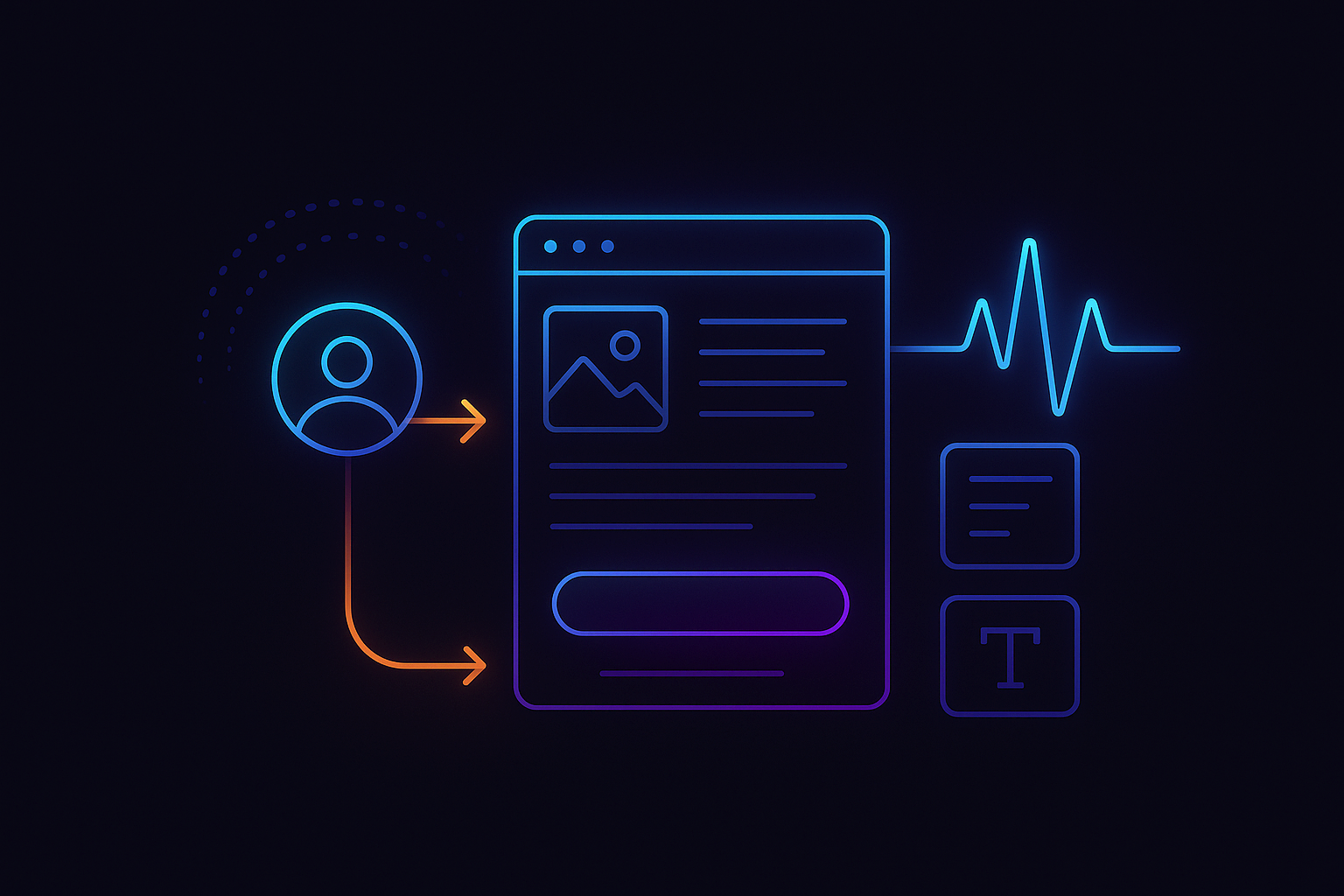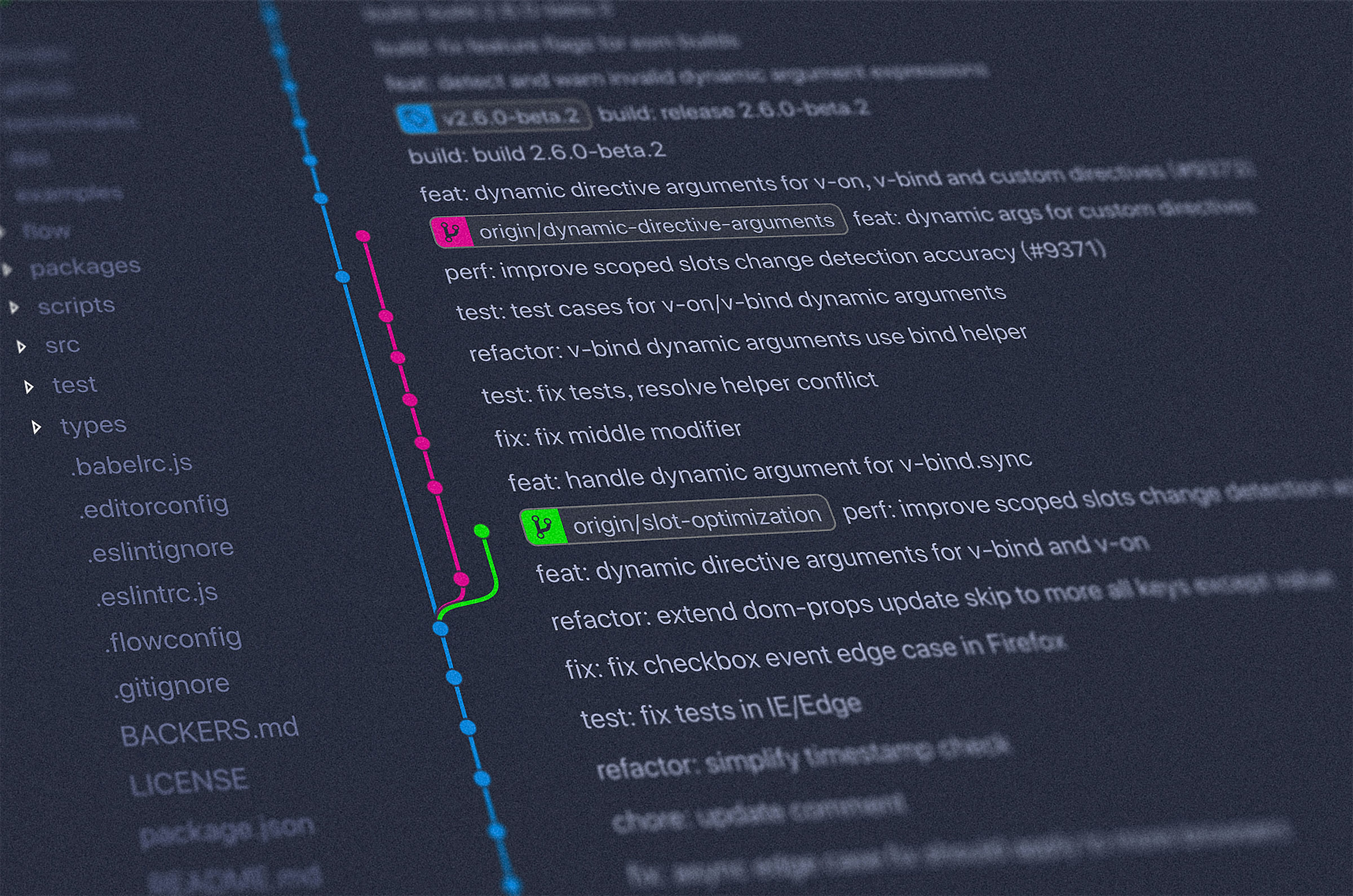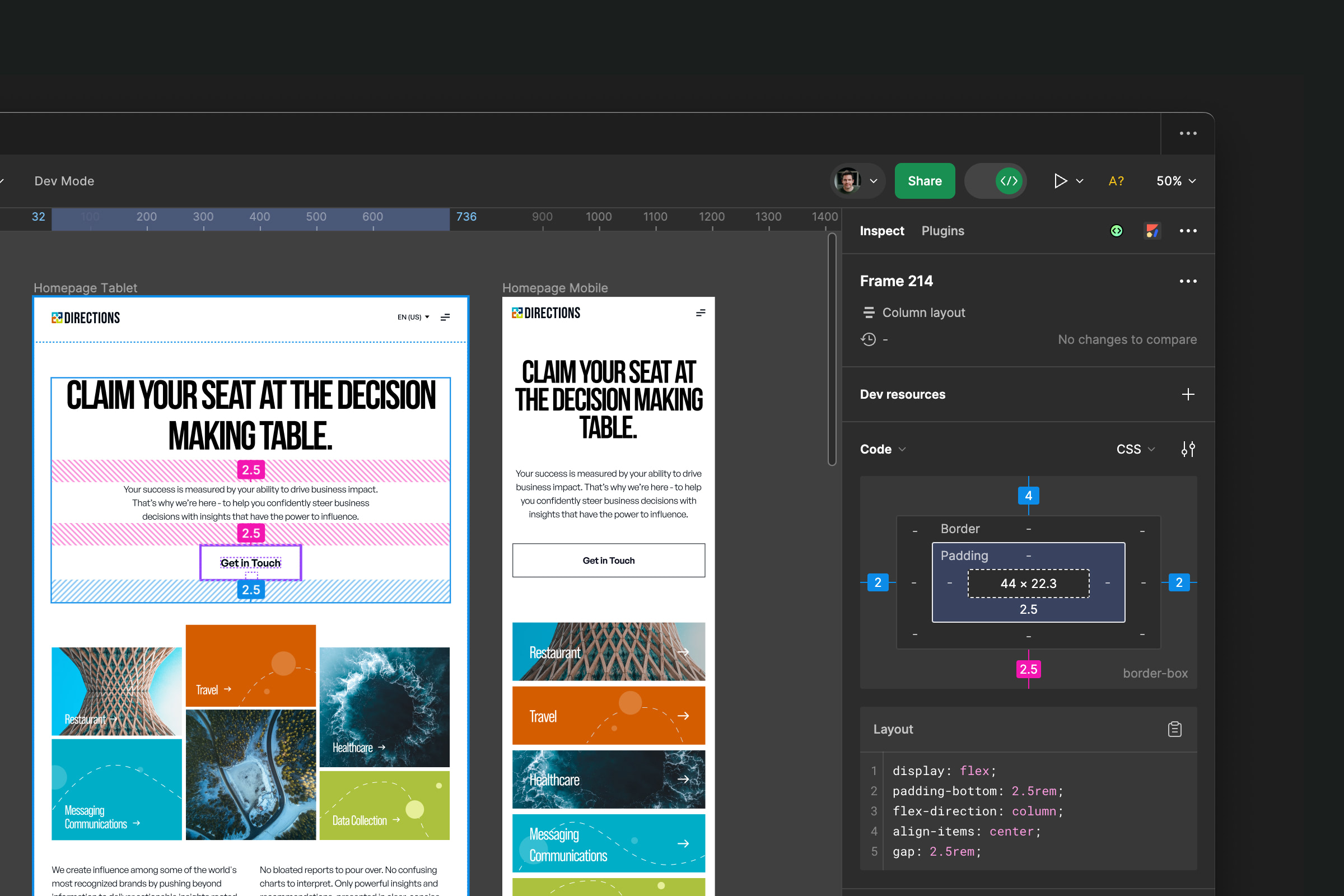Insights
Beyond the Platform: Key Strategic Considerations for Scaling Your Ecommerce Revenue Past $XX Million

Key Takeaways
- Composable architecture reduces time-to-market by 45% and prevents vendor lock-in
- First-party data strategies deliver 2x higher opt-in rates than traditional methods
- AI-driven pricing typically generates 3-6% gross margin improvements within 90 days
- Retail media networks can add 5-10% to EBIT for brands over $100M GMV
- Live commerce drives double-digit AOV increases with sub-2% return rates
- Edge computing cuts page load times by 35-60%, directly boosting conversions
- Autonomous supply chain tech reduces fulfillment costs by 20-30%
- Core Web Vitals optimization lifts conversion ~1% for every 100ms saved
Break free from monolithic architecture - why composable commerce is your scaling unlock
You know that feeling when you need to update your checkout flow but it means touching seventeen different parts of your platform? Yeah, thats the monolith tax you're paying every single day. Here's the thing - 45% of CX leaders have already adopted composable commerce, and there's a damn good reason for it.
Breaking your storefront, checkout, PIM, search, and CMS into independent services isn't just trendy architect-speak. Its about being able to swap out your search provider without touching checkout. Or updating your CMS without breaking the entire site. Companies making this shift report faster release velocity as their number one gain - we're talking deployments that used to take weeks now happening in hours.
The real magic happens when you treat your frontend like infrastructure. Micro-frontends let different teams own different domains - your PDP team can deploy updates while the cart team is still testing. During high-traffic events (think Black Friday), this architecture keeps mean-time-to-restore below 15 minutes. Can your monolith do that?
Magnet's custom software solutions help brands architect these transitions without the typical 18-month nightmare. But here's where it gets really interesting - pushing everything to edge platforms. Edge computing benefits include 35-60% reduction in time-to-first-byte, and that translates directly to conversion lifts of 7-11%.
Remember, every milisecond counts when you're scaling past that next revenue milestone. Your competitors are already making these moves - the question is whether you'll lead or follow in this architectural revolution.
Your data is a goldmine you're probably not mining - building a first-party data fabric
Let me guess - your customer data lives in twelve different systems and getting a unified view requires three engineers and a prayer? Welcome to every growing ecommerce brand's nightmare. But heres what separates the brands crushing it from everyone else: real-time identity resolution.
A proper CDP that resolves to a global profile within 200ms isn't just nice to have anymore. It's table stakes. Why? Because when someone browses on mobile, adds to cart on desktop, and checks out on tablet, you need to know its the same person. Instantly. Not tomorrow after your batch ETL runs.
But the real opportunity everyone's missing? Zero-party data collection. Forget those annoying email gates - progressive preference capture through quizzes and wishlists delivers 2x higher opt-in rates. Think about it - when someone volunterily tells you their skin type or style preferences, they're literally handing you the keys to personalization.
Magnet's analytics expertise helps brands build these data fabrics without the typical integration headaches. The trick is starting with clickstream and transaction events, then layering in service interactions. Get this right and you're not just collecting data - you're building a competitive moat that gets deeper with every interaction.
One brand we know implemented progressive profiling through a style quiz. Conversion rate on quiz-takers? 3.2x higher than non-participants. That's not incremental improvement - thats transformation. And with third-party cookies dying, this first-party strategy isnt optional anymore.
From personalization to prediction - how AI orchestration actually moves the needle
Everyone talks about personalization like its 2019. News flash - showing someone products in their size isn't impressive anymore. The game has completely changed, and if you're still using rule-based recommendation engines, you're bringing a knife to a gunfight.
Session-level decisioning is where the real money is. Drop those clunky decision trees and implement reinforcement learning models that update after every single click. Not daily. Not hourly. Every. Single. Click. This isn't theoretical - AI referrals grew over 10x year-over-year from July 2024 to February 2025.
But here's what most brands screw up - they forget about LLM optimization. Those AI agents crawling your site? They need properly structured data. Optimize your PDP markup for LLM crawlers, get into beta feeds for platforms like ChatGPT Browsing, and for gods sake, build a brand-controlled AI concierge that actually helps instead of frustrates.
Walmart's super-agent playbook shows the way - one AI engine serving customers, employees, sellers, and developers. This isn't about chatbots anymore. Its about removing friction from every single touchpoint across your funnel.
Magnet's AI and conversion optimization teams have seen brands implement these strategies with remarkable results. One fashion retailer switched from rules-based to RL-powered recommendations and saw session RPV jump 8% in the first month. Not bad for a "small" change, right?
The brands winning tomorrow aren't just using AI - they're building it into the fabric of every customer interaction. Question is, are you architecting for that future or still tweaking last year's personalization rules?
Dynamic pricing isn't just for airlines anymore - AI-driven merchandising that prints money
Remember when pricing strategy meant looking at competitors once a quarter and adjusting? Those days are as dead as dial-up internet. Today's winners run real-time ML models that ingest competitor feeds, inventory levels, and demand elasticity every few minutes. The result? Brands report 3-6% margin lift within 90 days.
But dynamic pricing is just the start. Auto-generating "drop" collections based on trending search clusters and TikTok velocity? Thats where things get interesting. Imagine refreshing collections every 48 hours based on what's actually trending, not what your merchandiser thinks might work. One streetwear brand automated this and saw a 22% lift in conversion on trend-driven collections.
Predictive markdown is the secret weapon nobodys talking about enough. Instead of blanket 30% off sales that destroy margin, reinforcement learning analyzes sell-through curves to set precise discount depths. You protect brand equity while still moving inventory. It's surgical precision versus a sledgehammer approach.
Magnet's ecommerce platform expertise includes implementing these AI-driven systems without the typical six-figure consulting nightmare. The key is starting with your top 100 SKUs, proving the model, then scaling. Too many brands try to boil the ocean and end up with analysis paralysis.
Here's a dirty little secret - most of your competitors are still using Excel for pricing decisions. While they're updating spreadsheets, you could be running thousands of price tests daily, learning what actually drives conversion without tanking margin. That's not just competitive advantage - its a different sport entirely.
Turn your traffic into an ad network - the retail media revolution
Heres a number that should make you sit up straight - retail media hit a $24B run rate in 2025. If you're doing over $100M GMV and don't have your own retail media network, you're literally leaving money on the table. We're talking 5-10% EBIT boost just from ad fees.
Think about it - you've got the traffic, you've got the audience data, why let Google and Facebook capture all the ad value? Smart brands are spinning up their own RMNs and letting vendors bid for premium placement. It's not just extra revenue - it's turning a cost center (your site traffic) into a profit center.
But here's where it gets really clever - bidirectional marketplaces. Syndicate your catalog to high-intent platforms like Target+, Zalando, or TikTok Shop, then pipe that behavioral data back into your RMN for lookalike targeting. You're not just selling on multiple channels - you're building a data network that compounds value with every transaction.
Magnet's PPC and SEM teams help brands architect these networks without the usual technical debt. The trick is starting simple - sponsored product slots on your category pages - then expanding to display, email, even in-store if you have physical locations.
One home goods brand launched their RMN with just sponsored products. Six months later? 8% of total EBIT came from ad revenue, with zero increase in CAC. Their vendors were happy to pay for premium placement, shoppers got more relevant results, and the brand got pure margin. If that's not a win-win-win, I dont know what is.
Live commerce and atomic content - why your content strategy needs a complete overhaul
Static product pages are dead. I know, I know - your beautiful PDPs with their perfectly crafted descriptions. But while you're polishing copy, live commerce is driving double-digit AOV lifts with return rates below 2%. The shift isnt coming - it's here.
The secret sauce? Treating content as atomic, API-first objects. Every asset - product descriptions, 3D models, ingredient lists - becomes an addressable object. Suddenly that same content powers your website, mobile app, in-store kiosks, and social channels without manual duplication. Its content infrastructure, not content creation.
But here's what everyone gets wrong about live commerce - they create separate event pages. Wrong move. Bake live modules directly into your PDPs. When a creator goes live featuring a product, that stream should appear right on the product page. Real-time social proof meets immediate purchase intent.
Magnet's content management and copywriting teams understand this shift. One beauty brand integrated live streams into PDPs and saw engaged users convert at 3.8x the rate of standard visitors. The kicker? Those customers had 40% higher LTV because they felt more connected to the brand.
Think about your current content workflow. How many times does the same product info get rewritten for different channels? How often do you update specs across platforms? If the answer makes you cringe, you need atomic content architecture yesterday. Your competitors are already building these systems - don't get left behind selling static in a dynamic world.
Automate or die - supply chain AI that actually works
Your demand planning team still using quarterly forecasts? Let me paint you a picture of what your competitors are doing: transformer models analyzing macro trends, weather patterns, and social chatter to adjust PO quantities weekly. Not quarterly. Weekly. The difference in inventory efficiency is staggering.
AI demand sensing cuts stockouts by 25% while reducing holding costs by 18%. Think about what that means for working capital. Money that was sitting in a warehouse gathering dust is now fueling growth initiatives.
But the real gamechanger? Autonomous fulfillment. Robotics plus routing AI trimms unit fulfillment costs by 20-30% while enabling same-day delivery at national scale. This isn't sci-fi - major retailers deploying these systems are already seeing massive efficiency gains.
Magnet's infrastructure and API development expertise helps brands integrate these systems without ripping out existing WMS platforms. The key is starting with high-velocity SKUs and expanding gradually. Too many brands try to automate everything at once and end up with expensive disasters.
One apparel brand implemented demand sensing just for their top 500 SKUs. Result? They cut safety stock by 30% while improving in-stock rates. That freed up $12M in working capital that funded their retail media network buildout. See how these strategies compound when executed properly?
Your supply chain is either a competitive advantage or an anchor dragging you down. In a world where customer expect two-day (or same-day) delivery as standard, automation isn't optional - it's survival.
Performance is revenue - core web vitals and the google game in 2025
Every 100ms of load time costs you roughly 1% in conversion. Let that sink in. Your beautiful, feature-rich site might be literally bleeding revenue with every millisecond of delay. Post-March 2025 updates from Google specifically reward sites with optimized Core Web Vitals, and the winners are seeing serious visibility gains.
Sub-2 second Largest Contentful Paint isn't a nice-to-have anymore - it's table stakes. But here's what most brands miss: its not just about speed. Google's looking at E-E-A-T signals (Experience, Expertise, Authoritativeness, Trustworthiness) combined with semantic search intent. Your content needs to be fast AND substantive.
The trick? Structured data for rich results. While everyone's obsessing over AI-generated content, smart brands are marking up their pages to win featured snippets and rich cards. Product schema, FAQ schema, review schema - these aren't just technical checkboxes. They're your ticket to dominating SERPs.
Magnet's technical SEO and performance optimization teams approach this holistically. Speed without relevance is useless. Relevance without speed never gets seen. You need both, optimized in harmony.
One consumer electronics brand we know went all-in on CWV optimization. They shaved 1.3 seconds off their average load time and saw an immediate 11% conversion lift. But the real win? Their organic traffic jumped 28% after the next core update. Performance optimization paid for itself in weeks, not months.
Your site performance is a direct revenue lever. Every optimization compounds - faster sites rank better, convert better, and create happier customers who come back more often. Ignore this at your own peril.
Frequently asked questions
Q: We're only at $10M revenue - is this stuff relevant to us?A: Start laying the groundwork now. These aren't overnight transformations. Begin with data infrastructure and performance optimization - they'll pay dividends immediately while setting you up for advanced strategies later.
Q: How much should we budget for these initiatives?A: Think 5-10% of revenue for transformation initiatives. But focus on ROI - many of these strategies (like RMN or dynamic pricing) are self-funding within 6 months.
Q: What if we're locked into a monolithic platform for 2+ years?A: Start with what you can control. Edge computing, data fabric, and AI personalization can often layer on top of existing platforms. Plan your eventual migration while optimizing what you have.
Q: Which initiative typically shows the fastest ROI?A: Performance optimization and dynamic pricing usually show results within 30-90 days. Retail media networks can be profitable within 6 months if you have sufficient traffic.
Q: Do we need a huge tech team to implement these strategies?A: Not necessarily. Partners like Magnet specialize in these transformations. The key is having internal champions who understand the vision and can work with technical partners.
Q: How do we prioritize when everything seems important?A: Start with your biggest constraint. If conversion is your issue, focus on performance and personalization. If margin is the problem, prioritize dynamic pricing and retail media. Let data drive your sequencing.



































.jpeg)




.jpg)

.jpg)



.jpg)
